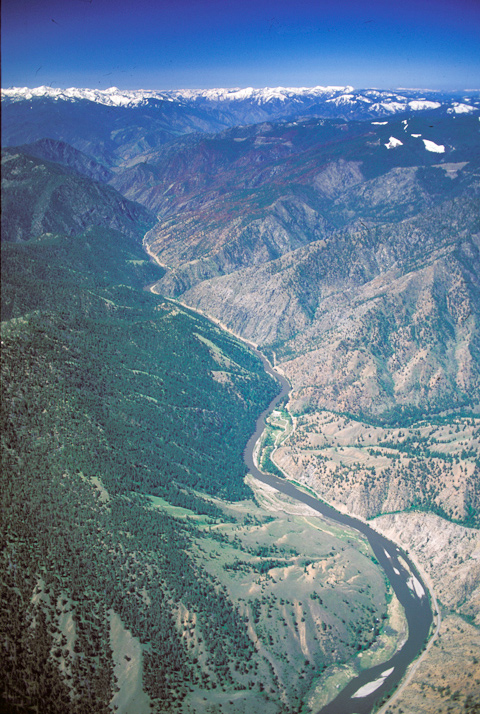The captains hoped that the Salmon River was the link in the water route to the Pacific Ocean that they had been sent to find. But Chief Cameahwait of the Lemhi Shoshones painted a “gloomey picture” of it, the details of which, as Clark said, “fell far short of my expectations or wishes.” Nonetheless, on the chance the starving Shoshones were merely scheming to keep them and their guns around for a while, the captains persuaded their new Shoshone guide, Toby,–”a very friendly intelligent old man,” Lewis allowed–to conduct Clark on an exploratory trek westward down what would later be called the River of No Return, to judge for himself.
In the four days between 21 and 24 August 1805, Clark explored fifty-two miles down the Salmon River (he named it Lewis’s River) from today’s North Fork, Idaho. All he saw was a continuous series of rapids. Moreover, their Shoshone guide Toby told him that the impediments he had seen were “Small & trifleing in comparison to the rocks & rapids below,” and that around the next bend “the Hills or mountains were . . . like the Side of a tree Streight up.”
On 23 August 1805, Clark saw that “the lofty Pine is thick in the bottom hill Sides on the mountains & up the runs,” perhaps large enough to make dugout canoes, but the river itself was a dreadful torrent, and portages around those sheer cliffs would have been impossible anyway. Nor was there any food to be had for man or horse.
He and Lewis may have been disappointed, but they couldn’t have been surprised. They knew that the Rockies were closer to the ocean than to the Mississippi, so the waters of the Columbia would have to be steeper and faster than those of the Missouri. What they couldn’t have guessed is that the river route, even if they could have succeeded in passing down it, would have been only about fifty miles–two or three days’ travel–shorter than the land route Toby eventually led them over.
On 24 August the captains began trading seriously for more horses. On the thirty-first, they turned northward, overland.
From Discovering Lewis & Clark from the Air
Photography by Jim Wark
Text by Joseph Mussulman
Reproduced by permission of Mountain Press
Experience the Lewis and Clark Trail
The Lewis and Clark Trail Experience—our sister site at lewisandclark.travel—connects the world to people and places on the Lewis and Clark Trail.
Discover More
- The Lewis and Clark Expedition: Day by Day by Gary E. Moulton (University of Nebraska Press, 2018). The story in prose, 14 May 1804–23 September 1806.
- The Lewis and Clark Journals: An American Epic of Discovery (abridged) by Gary E. Moulton (University of Nebraska Press, 2003). Selected journal excerpts, 14 May 1804–23 September 1806.
- The Lewis and Clark Journals. by Gary E. Moulton (University of Nebraska Press, 1983–2001). The complete story in 13 volumes.


